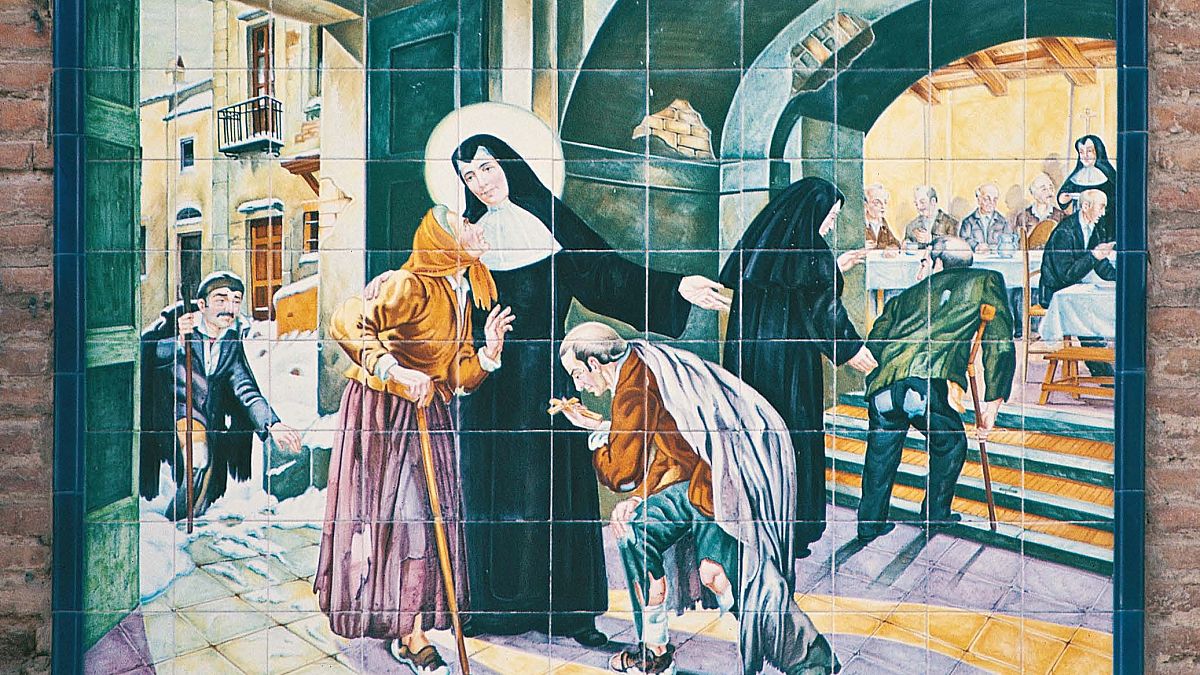In the age of huge, soulless shopping malls, a book celebrating the beauty of old Spanish shop fronts has become a surprise hit.
La Bellez Común (The Common Beauty) makes a case for a bygone age when shop fronts were a work of art in themselves as artisans were employed to attract customers.
The book was the brainchild of two architects, Luis Fernández-Galido and Javier Sánchez Bellver, who sought to record the most picturesque shop fronts for history.
The project was completed between 1977-78 but at the time it was not published.
It was finally put into print earlier this year, more than four decades on, and has become an unlikely best seller.
It is easy, however, to see why the book has created such a stir.
Every page is graced with delightful images of shops which display what the authors call the ‘art of commerce’.
To think such skill was employed to sell food or to tempt customers to have a haircut, seems incredible today when shopping is often, a largely dull experience with national chains replicating the same shop fronts in cities across the world to cement their brand identities in our brains.
High-street art
Take El Cisne (The Swan), which shows the images of two swimming swans on either side of the door into what appears to be a grocery store in Madrid.
“The swans facing each other pay homage to the person who crosses the threshold, and their impassive beauty can only announce health products and precious merchandise,” write the authors.
Fernández-Galino, who also edits a magazine called [Arquitectura Viva](also edits an architecture magazine called Arquitectura Viva (https://arquitecturaviva.com/en), which is published in Spanish and English. ), which is published in Spanish and English, explains the idea behind the book was to celebrated the dying ‘art of commerce’.
“The book came out of the work which was inspired by the Fundación Juan March (a Madrid-based cultural centre) to collect images of these shops. But it was stalled for all these years,” he told Euronews Culture.
“When it finally came out it was surprisingly well received. Without a doubt, lots of these shops are disappearing in Spain. There is now a movement to conserve these shop fronts and there is a certain nostalgia,” said Fernández-Galino.
“We toured all these cities and towns to try to get pictures and details of all these shop fronts. Some of these shop fronts are works of art. They were painted by artisans.”
The authors wanted to ensure that the book contained photographs from all Spain’s fifty provinces to give a true picture of the country.
“These shop fronts had such a lot of colour and clever designs because they are an invitation to customers to come in and buy things,” said Fernández-Galino.
“For me today it is a shame to walk through cities or towns today. A lot of these shopfronts had stories behind them.”
Short back and sides
He points to the example of the Salon de Peluqueria, in Lavapies, an inner city area of Madrid. This barber has a shop front with traditional ceramic tiles. At the centre of the façade is an image of a barber cutting a man’s hair in the blue and yellow images.
In the book, the authors said that the images and colours of this barber shop shows the “ballet between the barber and the customer”.
Today the same shop has been converted into a revolutionary left-wing bar run by Spain’s former deputy Prime Minister Pablo Iglesias, who left politics for pulling cañas (beers).
Iglesias was one of the leaders of the far-left Podemos party, which was the junior partner in Spain’s left-wing government. In 2021, he quit frontline politics to concentrate on presenting a television programme and to open this bar called Taberna Garibaldi.
Two other photographs show a surrealist touch in Valencia; one has an umbrella and the other a large, suspended hand.
On this theme, another shop in Cantabria, northern Spain, sells equipment for horses. What makes it stand out is a full-size, stuffed, white horse inside the shop. Below the horse, is a much smaller, stuffed crocodile.
A shop, which sold tickets to bullfights and football matches in the Basque Country, was designed with the red and gold of the Spanish flag. It appears the designers wanted to commemorate the fiesta nacional – the national fiesta as bullfighting is known to some Spaniards.
Inevitably, in a Roman Catholic country, religion plays a role. One shop front in Ciudad Real, in central Spain, borrows an important story from the Bible, with a coloured image of Christ expelling the merchants from the Temple.
In contrast, a food shop in Madrid shows off classical images. It is a world away from the ubiquitously bland stores of today.

